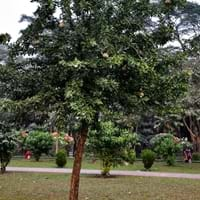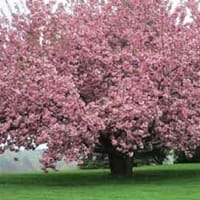Life Span
Perennial
Annual and Perennial
Type
Fruits, Trees
Flowering Plants, Fruit, Tree
Origin
Bangladesh, India, Pakistan, Sri Lanka, Tropical Indomalaya
Hybrid origin
Types
Not Available
Not Available
Habitat
Dry areas
Bushlands, gardens, Homesteads, In desert grasslands, Lowland, Shady Edge, Tropical areas
USDA Hardiness Zone
Not Available
5-8
AHS Heat Zone
Not Available
Not Available
Sunset Zone
Not Available
Not Available
Habit
Not Available
Oval or Rounded
Flower Color
White
White, Pink
Flower Color Modifier
Not Available
Bicolor
Fruit Color
Greyish Brown, Light Green, Not Available
Not Available
Leaf Color in Spring
Green
Green
Leaf Color in Summer
Dark Green
Dark Green
Leaf Color in Fall
Green
Not Available
Leaf Color in Winter
Gray Green
Not Available
Plant Season
Autumn
Spring, Fall
Sunlight
Full Sun, Partial Sun
Not Available
Type of Soil
Rich
Clay, Loam
The pH of Soil
Acidic, Neutral
Acidic, Neutral, Alkaline
Soil Drainage
Well drained
Average
Bloom Time
Late Fall
Summer, Late Summer, Early Fall
Tolerances
Drought
Not Available
Where to Plant?
Ground, Pot
Ground
How to Plant?
Budding, Layering, root cutting, Seedlings
Seedlings, Stem Cutting
Plant Maintenance
Low
Medium
Watering Requirements
Do not water excessively
Keep the ground moist but not water-logged, Requires watering in the growing season
In Summer
Lots of watering
Lots of watering
In Spring
Moderate
Moderate
In Winter
Average Water
Average Water
Soil pH
Acidic, Neutral
Acidic, Neutral, Alkaline
Soil Type
Rich
Clay, Loam
Soil Drainage Capacity
Well drained
Average
Sun Exposure
Full Sun, Partial Sun
Full Sun, Partial Sun
Pruning
Prune after harvesting, Remove dead or diseased plant parts
Prune prior to new growth, Remove deadheads, Shape and thin as needed
Fertilizers
for fruiting plants, use high phosphorous content fertilizer
Organic Manure
Pests and Diseases
Not Available
Aphids, Mealy bugs, Mites
Plant Tolerance
Drought
Not Available
Flower Petal Number
Single
Semi-Double
Foliage Texture
Medium
Medium
Foliage Sheen
Matte
Matte
Attracts
Not Available
Not Available
Allergy
Gastric
no allergic reactions
Aesthetic Uses
Not Used For Aesthetic Purpose
Ornamental use, Showy Purposes
Beauty Benefits
Good Cleanser
Not Available
Environmental Uses
Not Available
Air purification
Medicinal Uses
Blood cleanser, Diabetes, Ear ache, Energy, Kidney problems, Liver Protection, Malaria, Respiratory Disorders, scurvy, Snakebite
No Medicinal Use
Part of Plant Used
Fruits
Flowers, Fruits
Other Uses
Used As Food, Used for its medicinal properties
Culinary use, Showy Purposes, Used as Ornamental plant
Used As Indoor Plant
No
No
Used As Outdoor Plant
Yes
Yes
Garden Design
Edible, Fruit Tree
Feature Plant, Shade Trees, Street Trees
Botanical Name
Limonia acidissima
PRUNUS 'Hally Jolivette'
Common Name
Wood apple, monkey fruit, curd fruit
Flowering Cherry, Hally Jolivette Flowering Cherry
In German
Indischer Holzapfel
Blühende Kirsch
In French
Kawista
cerisier
In Spanish
Kawista
floración de la cereza
In Greek
γλυκό ασβέστη
Άνθιση κερασιών
In Portuguese
Limonia
cereja de florescência
In Polish
Feronia słoniowa
Kwitnienie wiśni
In Latin
dulcis ad cinerem
florentem cerasis
Phylum
Magnoliophyta
Tracheophyta
Class
Magnoliopsida
Magnoliopsida
Clade
Angiosperms, Eudicots
Angiosperms, Eudicots, Rosids
Tribe
Citreae
Not Available
Subfamily
Aurantioideae
Amygdaloideae
Difference Between Wood Apple and Flowering Cherry
If you are confused whether Wood Apple or Flowering Cherry are same, here are some features about those plants to help you choose better. Many people think that these two plants have the same characteristics, but one can see Wood Apple and Flowering Cherry Information and learn more about it. Fertilizers required for proper growth of Wood Apple are for fruiting plants, use high phosphorous content fertilizer, whereas for Flowering Cherry fertilizers required are Organic Manure. Hence, one should know the basic difference between Wood Apple and Flowering Cherry if you are planning to have them in your garden to enhance its beauty.
<
Flowering PlantsImportance of Wood Apple and Flowering Cherry
Want to have the most appropriate plant for your garden? You might want to know the importance of Wood Apple and Flowering Cherry. Basically, these two plants vary in many aspects. Compare Wood Apple and Flowering Cherry as they differ in many characteristics such as their life, care, benefits, facts, etc. Every gardener must at least have the slightest clue about the plants he wants to plant in his garden. Compare their benefits, which differ in many ways like facts and uses. The medicinal use of Wood Apple is Blood cleanser, Diabetes, Ear ache, Energy, Kidney problems, Liver Protection, Malaria, Respiratory Disorders, scurvy and Snakebite whereas of Flowering Cherry is No Medicinal Use. Wood Apple has beauty benefits as follows: Good Cleanser while Flowering Cherry has beauty benefits as follows: Good Cleanser.
Compare Facts of Wood Apple vs Flowering Cherry
How to choose the best garden plant for your garden depending upon its facts? Here garden plant comparison will help you to solve this query. Compare the facts of Wood Apple vs Flowering Cherry and know which one to choose. As garden plants have benefits and other uses, allergy is also a major drawback of plants for some people. Allergic reactions of Wood Apple are Gastric whereas of Flowering Cherry have no allergic reactions respectively. Having a fruit bearing plant in your garden can be a plus point of your garden. Wood Apple has no showy fruits and Flowering Cherry has no showy fruits. Also Wood Apple is not flowering and Flowering Cherry is not flowering . You can compare Wood Apple and Flowering Cherry facts and facts of other plants too.





